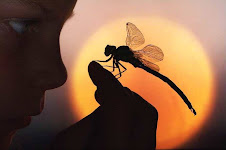The invention of the microscope made possible for people to discover and learn about cells. A microscope is an instrument that makes small objects look larger by using lenses to focus light.
Tech and design in history :
1590 First compound microscope. Zacharias Janssen. It was a tube with lens at each end.
1660 Hooke´s compound microscope. Include an oil lamp for lighting.
1674 Leeuwenhoek´s simple microscope. Used only one tiny lens, it could magnify a specimen up to 266 times.
1886 Modern compound light microscope. Ernest Abbé and Carl Zeiss. Compound with complex lenses, a mirror focuses light up thought the specimen. Magnify a specimen up to 1000 times.
1933 Transmission Electron Microscope (TEM). Ernest Ruska. TEMs send electrons though a very thinly sliced specimen and can magnify a specimen up to 500 000 times.
1965 Scanning Electron Microscope (SEM). An SEM sends electrons over the surface of a specimen rather than through it. The result is a three-dimensional image of the specimen´s surface. SEMs can magnify a specimen up to 150 000 times.
1981 Scanning Tunneling Microscope (STM). A STM measures electron that leak, or “tunel” from the surface of a specimen. STM can magnify a specimen up to 1 000 000 times.
Robert Hook: One of the first to build a compound microscope to observe cells. In 1663 observed the structure of a thin slice of cork and found that it was made up of cells.
Anton Van Leeuwenhoek: at the same time that Hooke made his discovery, he found a variety of one-celled organisms.
1838 Schleiden concluded that all plants are made of cells.
1839 Schwann concluded that all animals are made of cells.
1855 Virchow proposed “all cells come from cells”.
The cell theory states the following:
1. All living things are composed of cells.
2. Cells are the basic units of structure and function in living things.
3. All cells are produced from other cells.

No hay comentarios:
Publicar un comentario